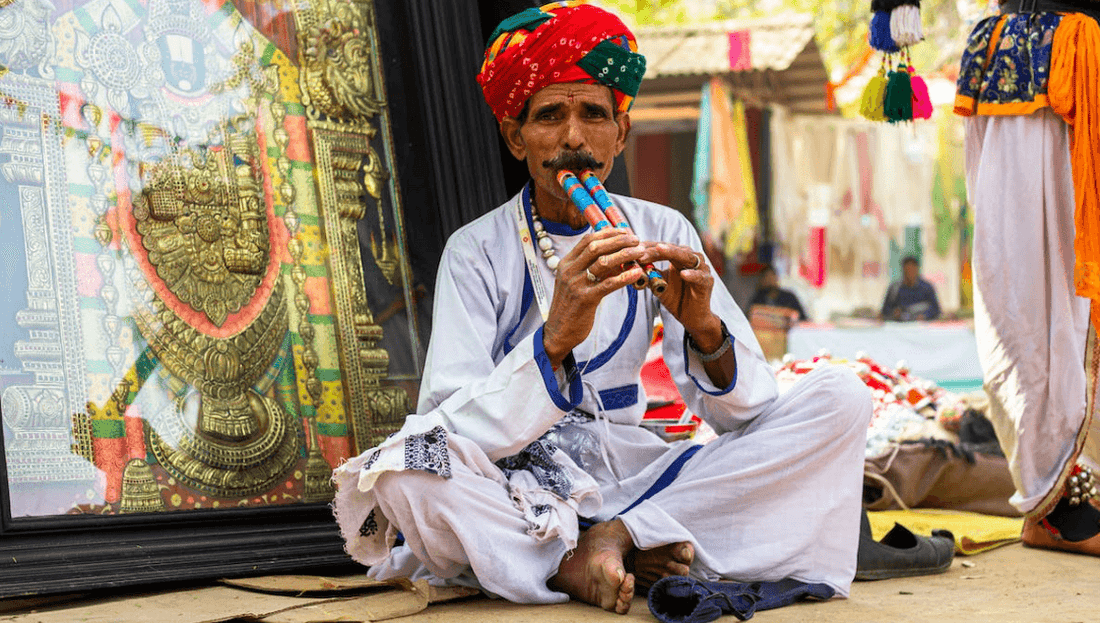
A Guide to Pakistani Traditional Clothing
Share
Pakistani traditional clothing is a rich and vibrant tapestry of colors, textures, and styles. It reflects the diverse cultural heritage of the country and is a source of immense pride for the people. In this article, we will explore the different types of Pakistani traditional clothing, their history, significance, and how they are worn.
1. Introduction
Pakistani traditional clothing has a long and colorful history. It is deeply rooted in the culture and traditions of the country and is an essential part of its identity. The clothing is not just a form of expression but also serves practical purposes, such as protection from the hot and dry climate. Each type of clothing has its unique style, design, and symbolism.
2. Historical Significance of Pakistani Traditional Clothing
Pakistani traditional clothing dates back centuries and has been influenced by various civilizations that have inhabited the region. The Mughals, for example, introduced the concept of the sherwani, a long coat worn over a shalwar kameez, while the British colonial rule brought the sari to the region. The clothing also reflects the religious and cultural diversity of the country, with Hindus, Muslims, and Sikhs each having their unique styles and designs.
3. Types of Pakistani Traditional Clothing
3.1 Shalwar Kameez
The shalwar kameez is the most common type of traditional clothing in Pakistan. It consists of a loose-fitting shirt called the kameez and a pair of pants called the shalwar. The clothing is worn by both men and women and is known for its comfort and versatility.
3.1.1 History and Origin
The shalwar kameez has its roots in the Mughal era, where it was worn by both men and women. However, it was during the British colonial rule that the shalwar kameez became popular among the masses.
3.1.2 Styles and Variations
The shalwar kameez comes in various styles and designs, ranging from simple cotton fabrics to heavily embroidered silk ones. The kameez can be long or short, with different types of necklines, sleeves, and cuts. The shalwar can be narrow or wide, and it may have different types of pleats or gathers.
3.1.3 Wearing the Shalwar Kameez
The shalwar kameez is worn differently by men and women. Men typically wear the kameez with a shalwar and a scarf called a dupatta. Women wear the kameez with a shalwa.
3.2 Sari
The sari is a long piece of fabric draped around the body, worn by women in Pakistan and other parts of South Asia. It is one of the most elegant and feminine types of traditional clothing.
3.2.1 History and Origin
The sari has its origins in the Indus Valley Civilization, which dates back to 2800 BCE. It was initially worn as a practical garment to protect the body from the hot and humid climate. Over time, it became a symbol of femininity and grace.
3.2.2 Styles and Variations
The sari comes in various styles and fabrics, ranging from simple cotton ones to heavily embellished silk ones. The length, width, and draping style can vary depending on the region and occasion. Some of the popular styles include the Bengali, Maharashtrian, and Gujarati sari.
3.2.3 Wearing the Sari
Wearing a sari requires skill and practice. It involves wrapping the fabric around the body, making pleats, and draping it over the shoulder. The blouse or choli worn underneath the sari can be of various styles and designs, depending on personal preferences.
3.3 Lehenga Choli
The lehenga choli is a popular type of traditional clothing worn by women in Pakistan for special occasions such as weddings and festivals. It consists of a long skirt called the lehenga, a blouse or choli, and a dupatta.
3.3.1 History and Origin
The lehenga choli has its roots in the Mughal era, where it was worn by royalty and the nobility. Over time, it became popular among the masses and is now an essential part of Pakistani traditional clothing.
3.3.2 Styles and Variations
The lehenga choli comes in various styles and designs, ranging from simple cotton ones to heavily embellished silk ones. The lehenga can be long or short, with different types of pleats and gathers. The choli can be of different styles and cuts, with various types of embroidery and embellishments.
3.3.3 Wearing the Lehenga Choli
Wearing a lehenga choli requires skill and practice. The lehenga is worn around the waist, while the choli is worn on the upper body. The dupatta is draped over the head or shoulder and can be used to cover the head or as an accessory.
3.4 Sherwani
The sherwani is a long coat worn over a shalwar kameez by men in Pakistan for special occasions such as weddings and formal events.
3.4.1 History and Origin
The sherwani has its roots in the Mughal era, where it was worn by royalty and the nobility. It was later adopted by the British and became popular among the masses.
3.4.2 Styles and Variations
The sherwani comes in various styles and designs, ranging from simple ones to heavily embellished ones. It can be of different lengths, with various types of collars and cuffs. The fabric used can vary from cotton to silk.
3.4.3 Wearing the Sherwani
The sherwani is worn over a shalwar kameez, with the dupatta draped over the shoulder. It is typically worn with a turban or a traditional cap called a topi.
3.5 Dupatta
The dupatta is a long scarf or shawl worn by women in Pakistan as an accessory to their traditional clothing.
3.5.1 History and Origin
The dupatta has been a part of Pakistani traditional clothing for centuries. It was initially worn by women to cover their heads and protect them from the sun and dust.
3.5.2 Styles and Variations
The dupatta comes in various styles and fabrics, ranging from simple cotton ones to heavily embellished silk ones. It can be of different lengths, with various types of embroidery and prints.
3.5.3 Wearing the Dupatta
The dupatta is typically worn draped over the head, shoulder, or around the neck. It can be used as an accessory to complement the outfit or as a practical garment to cover the head or protect from the sun.
4. Conclusion
In conclusion, Pakistani traditional clothing is a beautiful and diverse tapestry of colors, textures, and styles. It reflects the rich cultural heritage of the country and is an essential part of its identity. Each type of clothing has its unique history, significance, and way of wearing. Whether it's the shalwar kameez, sari, lehenga choli, sherwani, or dupatta, Pakistani traditional clothing is a source of immense pride and joy for the people.
5. FAQs
- What is the most common type of traditional clothing in Pakistan?
The most common type of traditional clothing in Pakistan is the shalwar kameez.
- Can men wear the sari in Pakistan?
Men do not typically wear the sari in Pakistan, as it is a garment primarily worn by women.
- What occasions are the lehenga choli and sherwani worn for?
The lehenga choli and sherwani are typically worn for special occasions such as weddings and formal events.
- Can the dupatta be worn by men in Pakistan?
The dupatta is typically worn by women in Pakistan and is not commonly worn by men.
- What is the history of Pakistani traditional clothing?
Pakistani traditional clothing has a long and diverse history, influenced by various civilizations that have inhabited the region. It reflects the religious and cultural diversity of the country and is an essential part of its identity.
